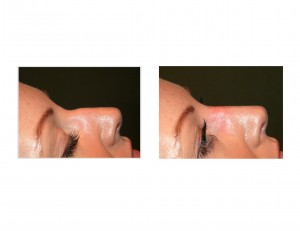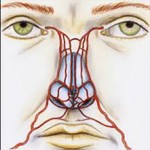Unlike many other facial plastic surgery procedures, there are few non-surgical alternatives to rhinoplasty surgery. The only way to make permanent nose shape changes is to alter the underlying bone and cartilage framework. Such alterations ultimately get reflected on the outside as the nasal skin adapts.


Avoiding these vessels is also important to prevent the most serious complication of injecting into the nose…blindness. Inadvertent injection into a blood vessel that may ultimately drain or flow into the back of the eye can cause optic nerve injury from embolization.
Besides restricting the location of the injections to the nasal midline, the type or properties of the injectable filler is also important. Only lower viscosity hyaluronic acid-based fillers should be used and thinned with local anesthetics if necessary. Thicker or higher viscosity fillers are more prone to risks of skin necrosis and blindness due to the high pressures that must be exerted to place them into the tight nasal spaces. (compression necrosis)
An injectable rhinoplasty approach can be done safely if hyaluronic fillers are used, injections stay in the midline and low volumes of filler are placed.
Dr. Barry Eppley
Indianapolis, Indiana


